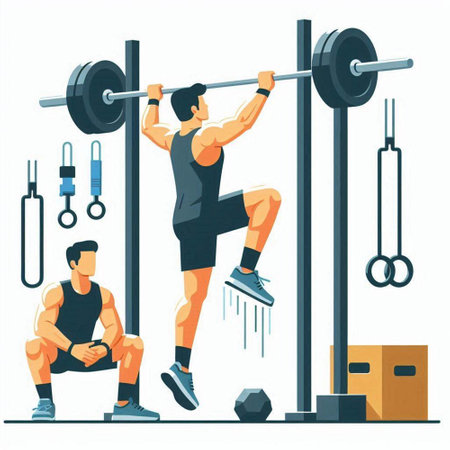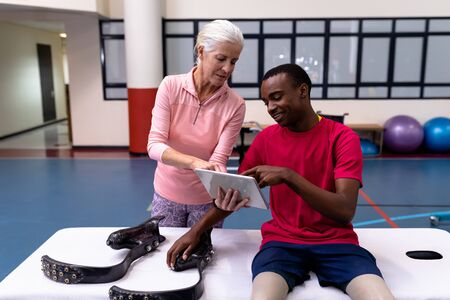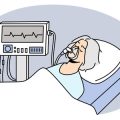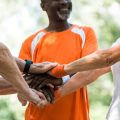Understanding Fall Risks in Older Adults
Falls are a major concern for seniors in the United States. Understanding why older adults are more likely to fall can help us find better ways to prevent these accidents. Let’s look at some of the most common reasons why falls happen among American seniors.
Common Causes of Falls in Seniors
| Cause | Description | Examples in the U.S. |
|---|---|---|
| Age-Related Changes | Natural changes that happen as people get older, affecting strength, vision, and balance. | Weaker leg muscles, slower reflexes, poor eyesight, decreased sensation in feet. |
| Medical Conditions | Health issues that are common in older adults and can increase fall risk. | Arthritis, diabetes, stroke, Parkinson’s disease, heart problems, osteoporosis. |
| Medications | Certain medicines or combinations can cause dizziness or drowsiness. | Blood pressure pills, sedatives, antidepressants, pain medications. |
| Environmental Factors | Hazards inside or outside the home that make falls more likely. | Poor lighting, slippery floors, cluttered walkways, loose rugs, uneven sidewalks. |
The Impact of Falls on Seniors in America
In the U.S., about one out of four adults age 65 and older falls each year. Many of these falls lead to serious injuries like hip fractures or head trauma. Even if there is no injury, the fear of falling again often causes seniors to become less active. This can make muscles weaker and balance worse over time.
Key Facts About Falls in U.S. Seniors
- Falls are the leading cause of both fatal and nonfatal injuries among older Americans.
- Seniors who have already fallen once are more likely to fall again.
- The cost of treating injuries from falls is rising every year in the U.S.
Why Physical Therapy Matters
Understanding these risks is the first step in preventing falls. Physical therapy uses specific exercises and modalities to address many of these causes by improving strength and balance. In the next sections, we’ll explore how physical therapy interventions can help keep seniors safer and more independent.
2. Assessment Tools for Strength and Balance
When working with seniors who are at risk of falling, physical therapists in the United States use specific tools to assess strength and balance. These standardized methods help therapists create personalized treatment plans and track progress over time. Two of the most common evaluation tools are the Berg Balance Scale (BBS) and the Timed Up and Go (TUG) test.
Berg Balance Scale (BBS)
The Berg Balance Scale is a widely used tool that measures a person’s ability to maintain balance during everyday tasks. The BBS consists of 14 simple activities such as standing up from a chair, standing with eyes closed, turning around, and reaching forward. Each activity is scored on a scale from 0 to 4, with a maximum total score of 56 points. Higher scores indicate better balance.
| Berg Balance Scale Tasks | Description |
|---|---|
| Sit to Stand | Standing up from a seated position without using hands |
| Standing Unsupported | Standing still for two minutes without holding on to anything |
| Turning 360° | Turning in a full circle while standing |
| Reaching Forward While Standing | Reaching forward as far as possible without losing balance |
Timed Up and Go (TUG) Test
The Timed Up and Go test is another simple but effective assessment. In this test, the senior starts by sitting in a chair, then stands up, walks a distance of 10 feet (about 3 meters), turns around, walks back to the chair, and sits down again. The therapist measures how many seconds it takes to complete the task. A time of 12 seconds or more may indicate a higher risk of falling.
| TUG Test Step | Description |
|---|---|
| Sit to Stand | Stand up from a chair when prompted by the tester |
| Walk Forward | Walk straight ahead for about 10 feet (3 meters) |
| Turn Around | Turn completely at the marker placed at the end point |
| Return and Sit Down | Walk back to the chair and sit down safely |
Why These Tools Matter in Physical Therapy Clinics Across America
Both the Berg Balance Scale and TUG test are valued for being easy to use, reliable, and quick to perform in clinic settings. They allow therapists to objectively measure changes in strength and balance over time, making it easier to adjust therapy plans as needed. By using these standardized assessments, physical therapists can help seniors stay independent and reduce their risk of falls.

3. Evidence-Based Physical Therapy Modalities
Physical therapy offers a variety of evidence-based modalities designed to help fall-prone seniors improve their strength and balance. These approaches are widely used in clinics and community settings across the United States, and they can be tailored to meet each individuals needs and abilities.
Resistance Training
Resistance training, often called strength training, involves using weights, resistance bands, or body weight to build muscle strength. For older adults, this kind of exercise is especially important for maintaining independence and reducing the risk of falls. Strengthening key muscle groups—such as the legs, hips, and core—helps provide better support and stability during daily activities.
| Type | Examples | Benefits |
|---|---|---|
| Body Weight Exercises | Squats, sit-to-stand, step-ups | Improve lower body strength; easy to do at home |
| Resistance Bands | Banded leg lifts, arm curls | Low-impact; adjustable resistance levels |
| Free Weights or Machines | Leg press, dumbbell lifts | Target specific muscles; can track progress easily |
Balance Exercises
Balance exercises focus on improving coordination and stability. These activities challenge the body’s ability to maintain posture and react to changes in position, which is vital for preventing falls. Balance training is often integrated into everyday movements so seniors can practice safely at home or in a group class.
| Exercise | Description | How It Helps |
|---|---|---|
| Tandem Stance/Walking | Standing or walking heel-to-toe in a straight line | Improves steadiness while moving or standing still |
| Single Leg Stand | Lifting one foot off the ground while holding onto a sturdy surface if needed | Enhances single-leg balance for daily tasks like stepping over objects or getting dressed |
| Bosu Ball Activities | Standing or doing light exercises on a soft, unstable surface like a Bosu ball or cushion | Challenges core muscles and improves reaction time to loss of balance |
Neuromuscular Re-Education
This modality uses specific exercises and movement patterns to retrain how the brain and muscles communicate. Neuromuscular re-education helps seniors react faster if they lose their balance and teaches them safer movement strategies. Examples include stepping reactions, dynamic reaching activities, and dual-task exercises (like walking while talking).
Role in Improving Function and Preventing Falls
Together, these physical therapy modalities build overall strength, boost confidence in mobility, and teach effective ways to recover from slips or trips. By focusing on both muscle power and coordination, seniors are better equipped to manage daily challenges and reduce their risk of falling.
4. Incorporating Technology and Community Programs
For American seniors at risk of falling, new technology and local community programs can make a big difference in building strength and balance. Many older adults are now using wearable devices, joining telehealth sessions, and taking part in fun community activities designed just for them.
Wearable Devices for Seniors
Wearable technology is more than just a trend—it’s a practical way to stay safe and active. Devices like smartwatches or fitness trackers can help seniors track steps, monitor heart rates, and even alert family members if a fall happens. Some wearables also give reminders to move or exercise, which is especially useful for those who need a gentle nudge to stay active.
| Device | Main Features | Benefits for Seniors |
|---|---|---|
| Smartwatch (e.g., Apple Watch) | Fall detection, heart rate monitoring, activity tracking | Immediate help after a fall, health data sharing with caregivers |
| Fitness Tracker (e.g., Fitbit) | Step counting, sleep monitoring, movement reminders | Motivates daily movement, tracks progress easily |
| Medical Alert Systems | Emergency button, GPS location, automatic alerts | Peace of mind for seniors living alone or with health concerns |
Telehealth Initiatives in Physical Therapy
Telehealth is making it easier than ever for seniors to get expert physical therapy without leaving their homes. Through video calls and online platforms, therapists can guide older adults through exercises that improve strength and balance. This is especially helpful for those who live far from clinics or have transportation challenges. Telehealth also allows family members to participate in sessions, so everyone stays informed about progress and goals.
Local Community Resources: SilverSneakers and More
Across the United States, programs like SilverSneakers offer gym access and exercise classes specifically for seniors—often at no extra cost with Medicare Advantage plans. These classes focus on improving strength, flexibility, and balance in a supportive group setting. Many community centers also offer yoga, tai chi, or water aerobics tailored to older adults’ needs. Participating in these programs not only helps with physical health but also encourages social connections.
| Program Name | Main Activities | How to Access |
|---|---|---|
| SilverSneakers | Group fitness classes, gym access, online workouts | Included with many Medicare Advantage plans; check eligibility online or at local gyms |
| YMCA Senior Programs | Aquatic therapy, balance classes, walking groups | Visit your local YMCA or their website for schedules and membership options |
| Parks & Recreation Centers | Tai Chi, chair yoga, senior fitness workshops | Check city or county websites for class times and registration details |
The Power of Staying Connected and Engaged
The combination of technology and community resources gives American seniors more ways than ever to stay strong and steady on their feet. Whether its checking daily steps on a smartwatch or enjoying laughter-filled classes with friends at the local gym, these tools support better balance—and a better quality of life—for everyone.
5. Patient-Centered Care and Home Safety Strategies
Guidelines for Individualized Exercise Prescriptions
When working with seniors who are at risk of falling, a one-size-fits-all approach does not work. Physical therapists in the United States focus on patient-centered care by creating customized exercise plans based on each persons needs, abilities, and goals. This process often includes:
- Initial Assessment: Evaluating strength, balance, flexibility, and overall mobility.
- Setting Realistic Goals: Working with the senior to identify personal goals, such as walking without assistance or getting up from a chair more easily.
- Gradual Progression: Starting with simple exercises and increasing intensity as strength and confidence improve.
- Continuous Monitoring: Regular check-ins to adapt the exercise plan as progress is made or if new challenges arise.
Family Involvement: Building a Support System
Family support can make a big difference in successful fall prevention. In American culture, family members are often encouraged to get involved in their loved ones therapy and home safety planning. Here are some ways families can help:
- Attending Therapy Sessions: Family members can learn correct techniques and encourage their loved one to stay active.
- Helping with Exercises at Home: Providing reminders and supervision during home exercises for safety and consistency.
- Communication: Keeping an open line of communication with healthcare providers to report any changes or concerns.
Practical Suggestions for Making Home Environments Safer
A safe home environment is essential for reducing fall risks among seniors. Here are some practical strategies commonly recommended in the U.S.:
| Area of Home | Potential Hazard | Safety Suggestion |
|---|---|---|
| Living Room & Hallways | Loose rugs, cluttered walkways | Remove throw rugs, keep pathways clear of cords and furniture |
| Bathroom | Slippery floors, lack of grab bars | Add non-slip mats, install grab bars near the toilet and shower |
| Stairs | Poor lighting, no handrails | Add bright lighting, ensure sturdy handrails on both sides |
| Bedroom | Difficult-to-reach light switches, high beds | Use nightlights, lower bed height if necessary |
Simple Daily Habits for Seniors and Families
- Wear well-fitting shoes with non-slip soles.
- Avoid walking on wet floors or icy sidewalks.
- Keep frequently used items within easy reach.
- Create a daily routine that includes balance exercises prescribed by a physical therapist.
- If needed, use assistive devices (like canes or walkers) as recommended by professionals.
The Importance of Ongoing Support
The journey to better strength and balance is ongoing. By personalizing exercise programs, involving family members, and making homes safer, physical therapy can greatly reduce fall risks for seniors. A team approach helps everyone feel more confident and secure every day.


